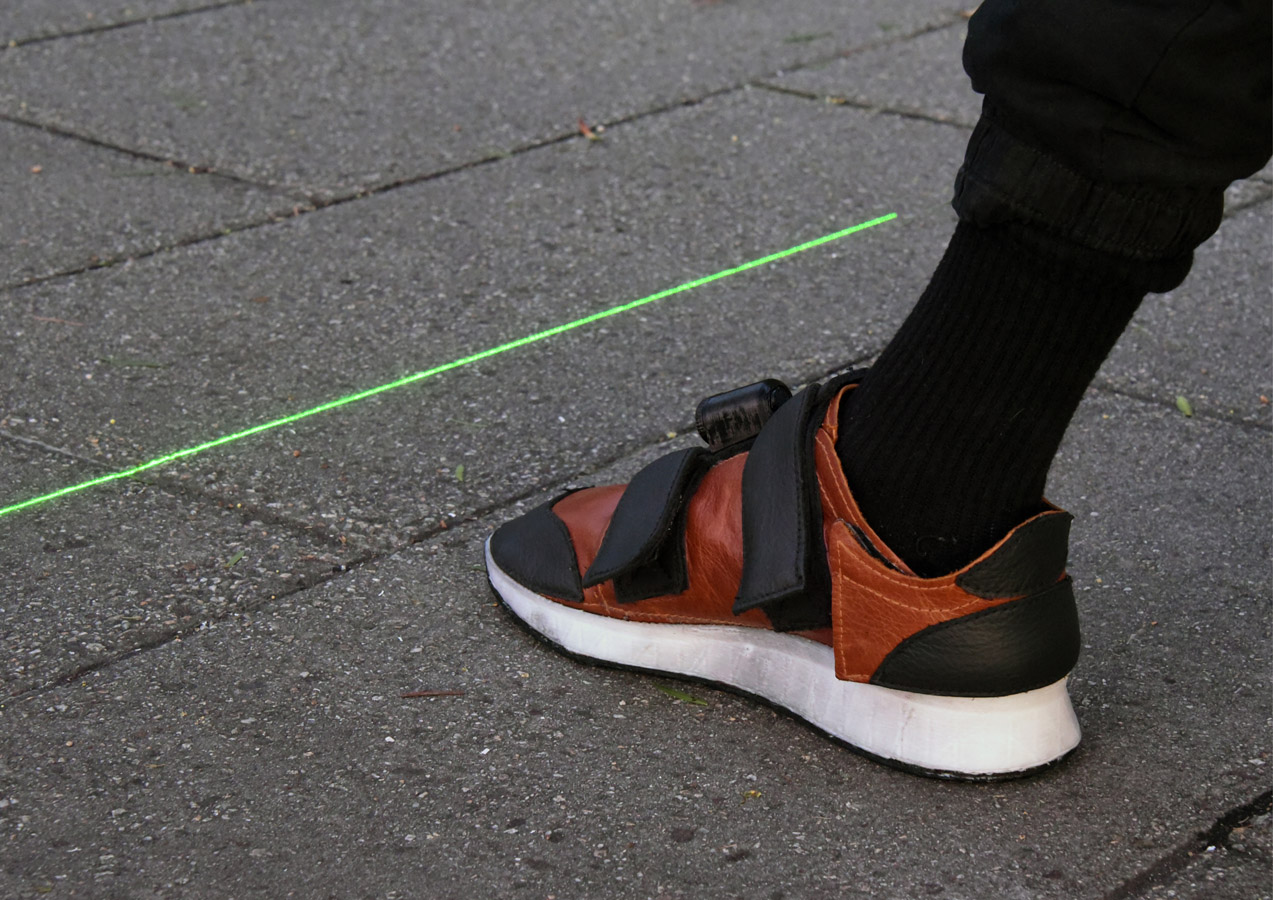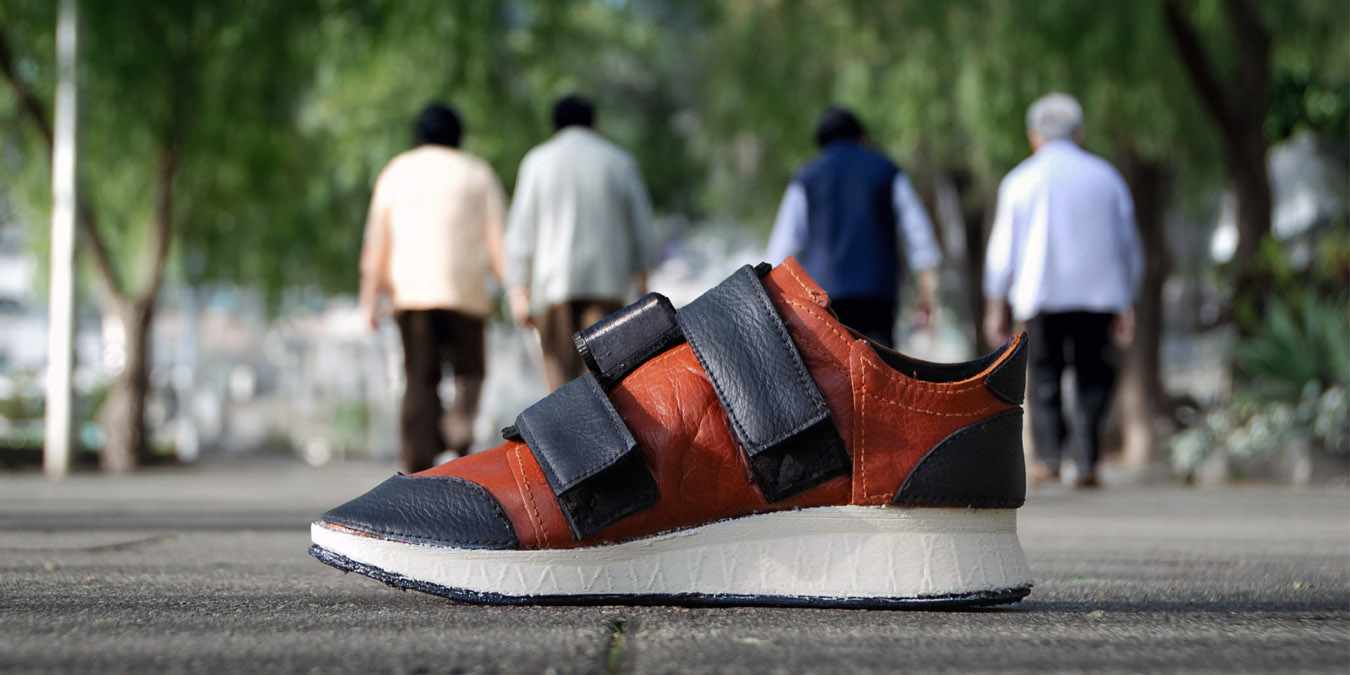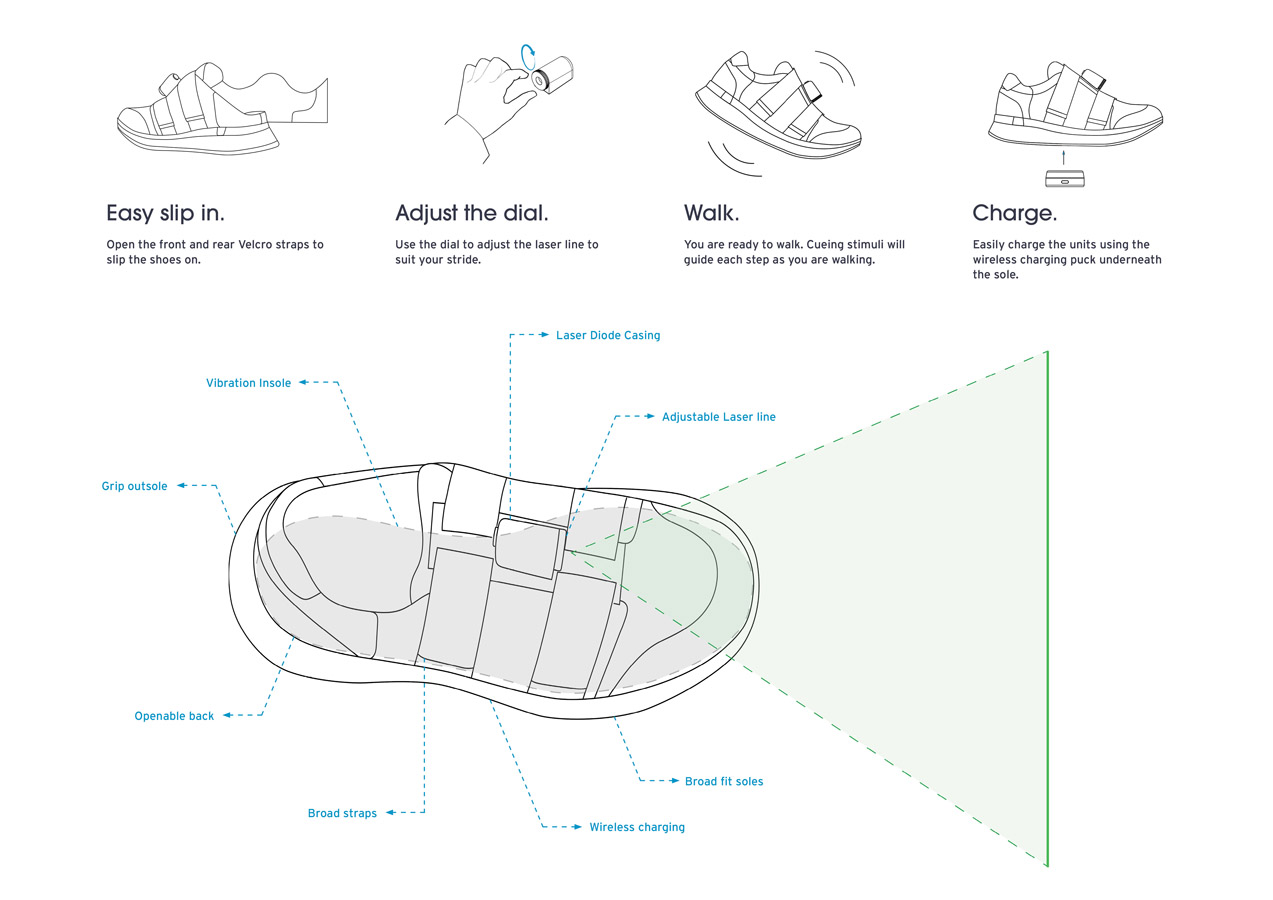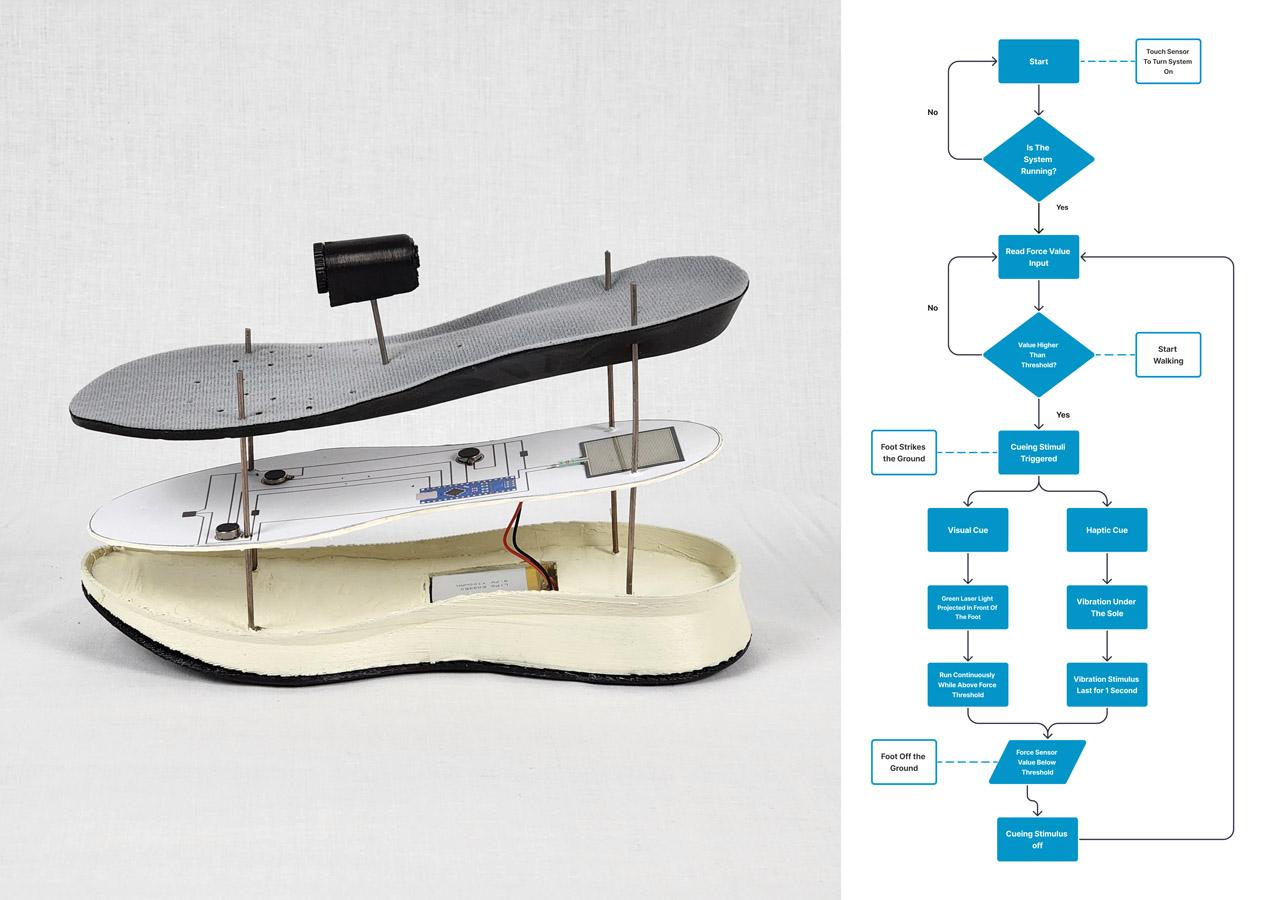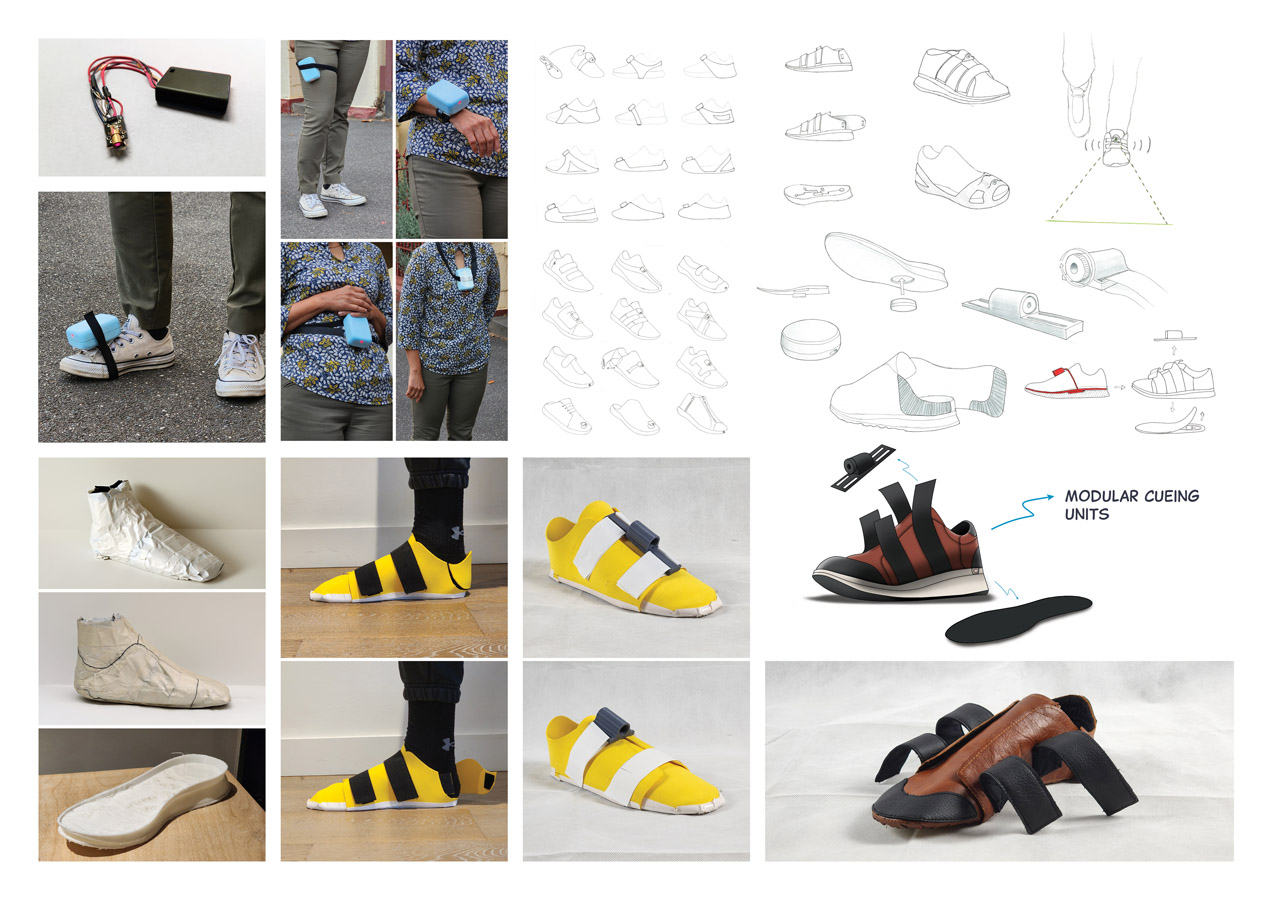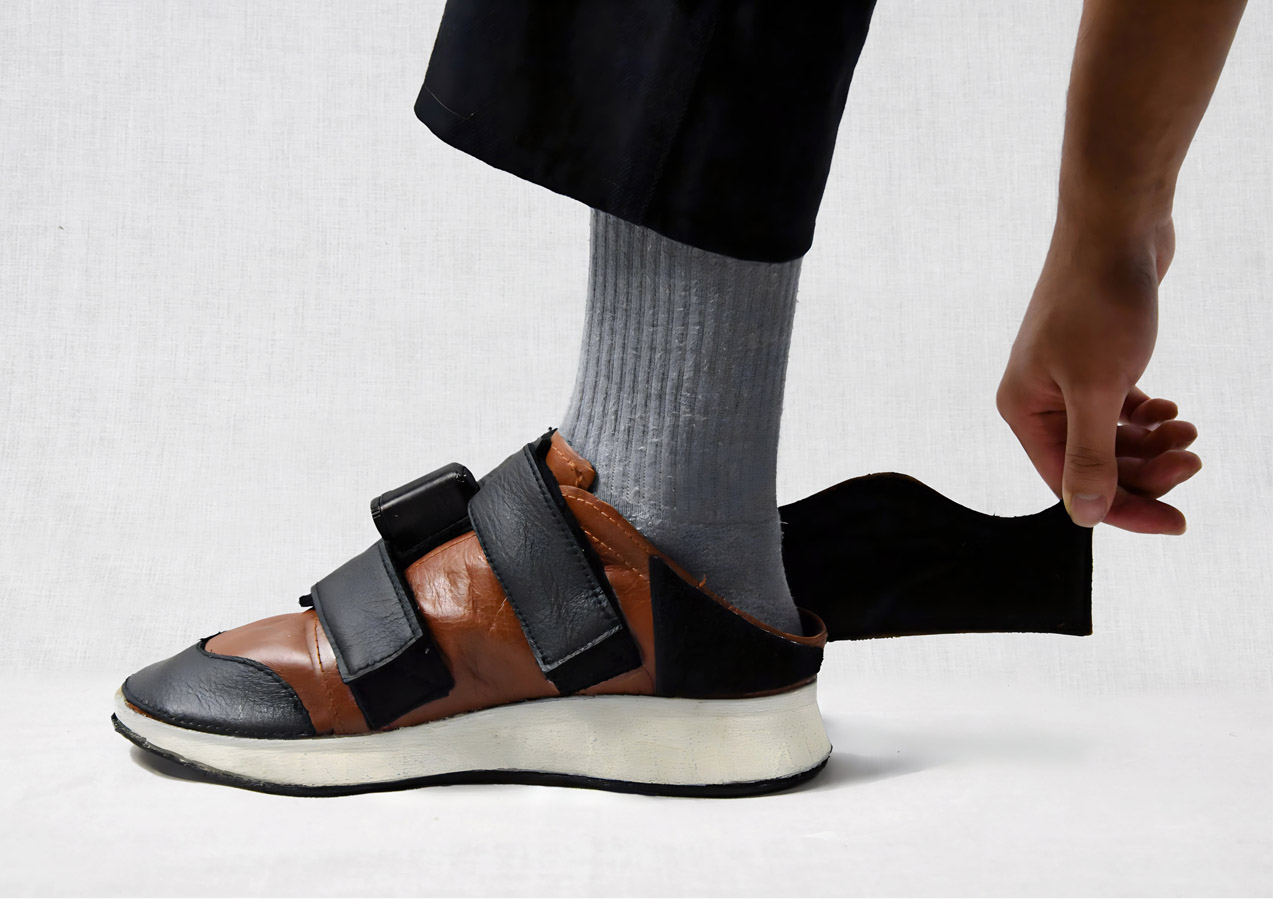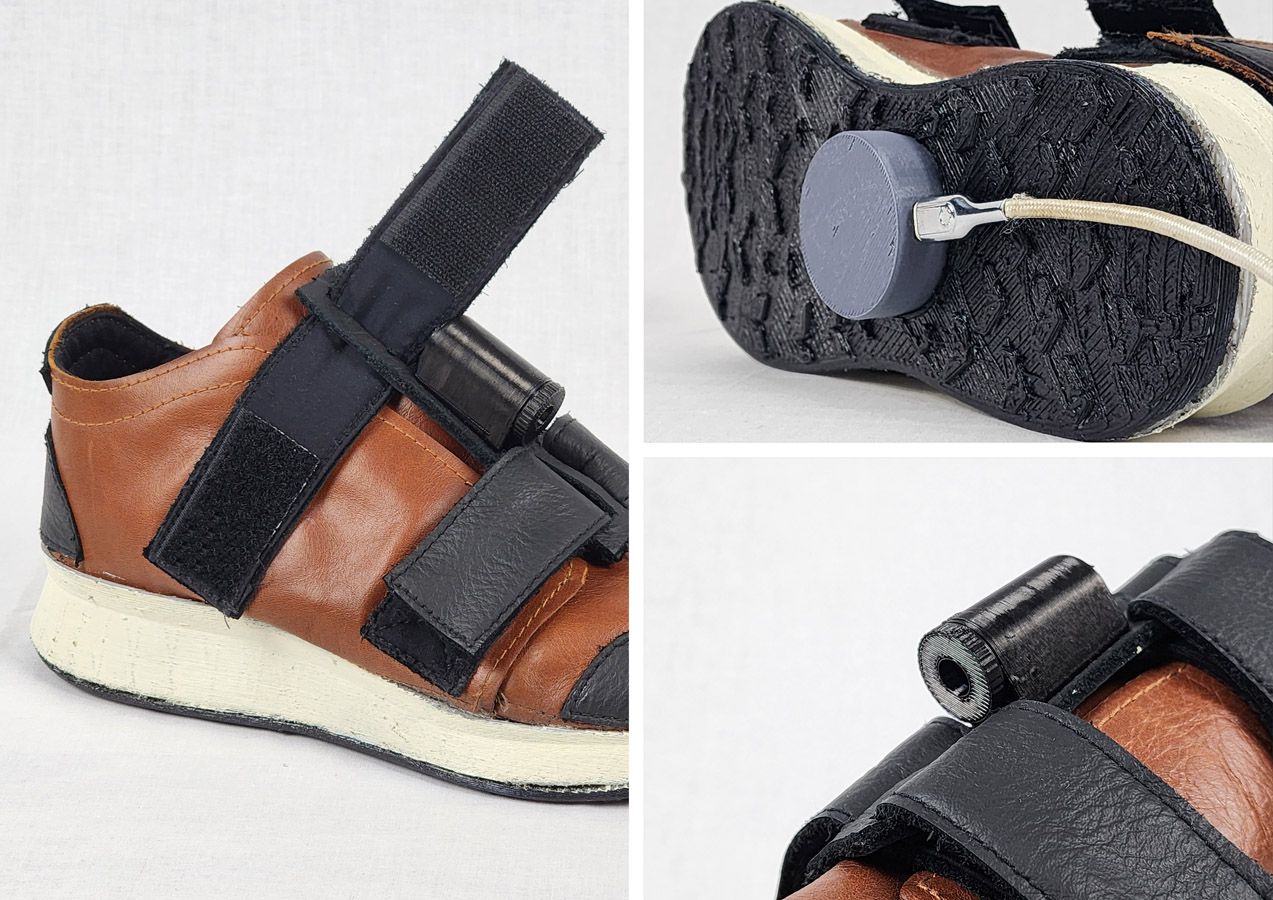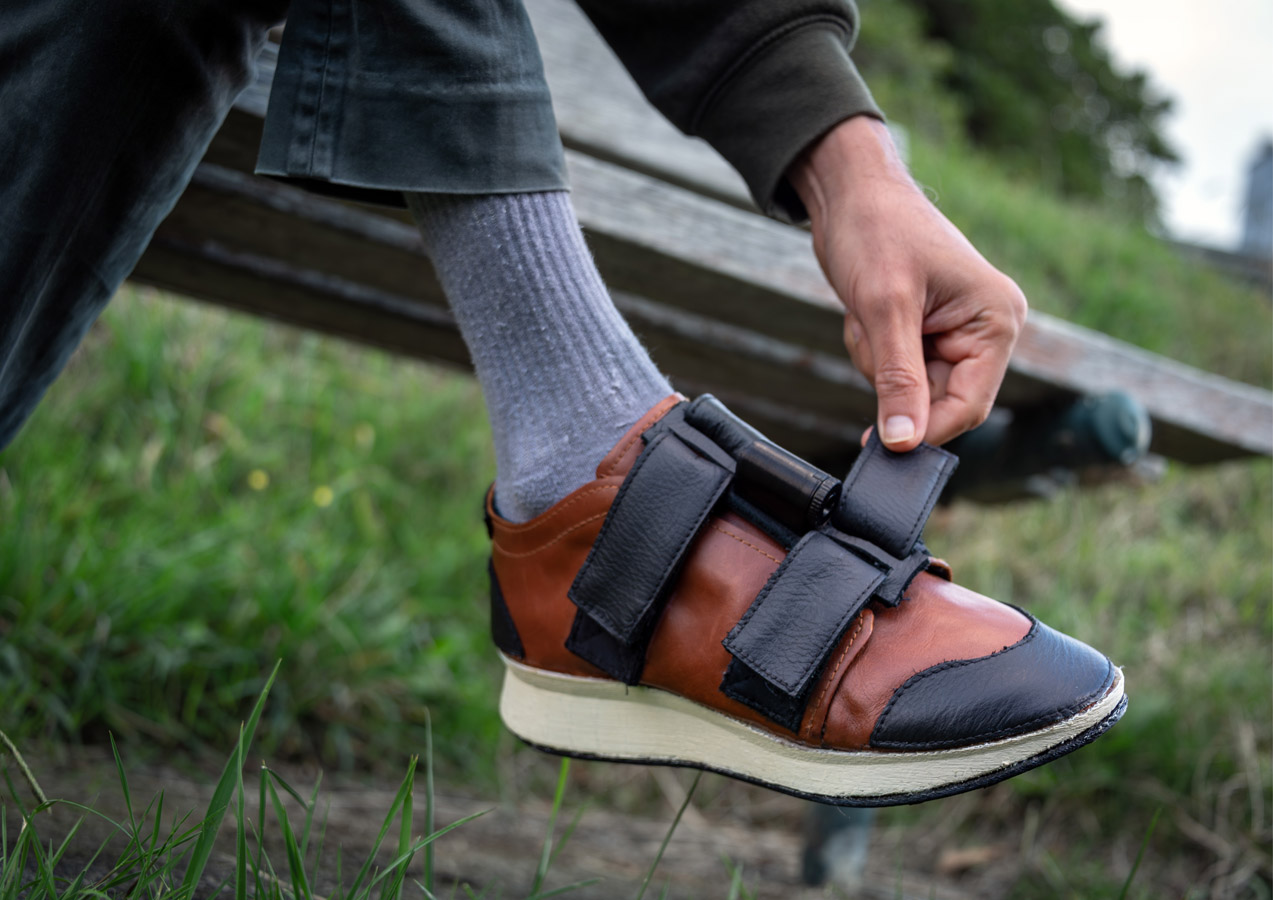The design process was methodically structured into two distinct phases. The initial phase began with comprehensive research and development to understand the project’s context, scope, and inherent challenges. Through extensive engagement with health professionals, literature reviews, personal case studies, user observations, journey mapping, and online surveys, potential market gaps were identified, and various technological interventions were explored. This holistic approach provided deep insights into user needs and the effectiveness of the various and/or combination of cueing modalities.
Among these findings, visual cueing emerged as the most promising solution for individuals with Parkinson’s disease, particularly through the use of laser light projections. Studies consistently showed positive responses to projecting a guiding line in front of the user’s foot, suggesting its potential for improving mobility and stability.
The second phase focused on refining design concepts and practical implementation. A prototype was developed to experiment with optimal body placement for the cueing device. Research into footwear challenges and sensory issues specific to Parkinson’s patients informed iterative sketching and physical prototyping to develop concept designs. Regular consultations with health professionals at this stage in the process provided crucial feedback, assisting in the evaluation process of two possible design pathways.
By presenting concept sketches and prototypes to health professionals throughout the iterative development process, the project’s viability and effectiveness were continuously evaluated and refined. This approach not only ensured alignment with user needs but also guided the project towards a successful outcome.

